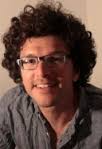Young Scientist of the Month: Çağlar Girit

1) Would you please tell us about yourself and your journey that led you to become a scholar?
When I was a boy my father would take me to his lab in the physics department at Princeton University. In the hangar-like building that housed his experiment to detect neutrinos, he would fill his dilution refrigerator with liquid helium. I would smash liquid nitrogen bubbles flowing across the floor and build metal stick figures with a soldering iron. I remember weekends where he would guide us through kitchen-sink experiments. I remember dinner table discussions about neutron stars.
Now twenty-five years later as a physicist at Collège de France in Paris I have my own dilution refrigerator and do experiments not so different from his. Years earlier, as an undergrad trying to choose his major at the Massachusetts Institute of Technology, I told myself "Don't be a physicist, don't do exactly what your dad does. Try something else: be a neuroscientist, study gray matter, not hard matter." And yet the physics I learned there was so beautiful, and my physics professors so inspirational, that I couldn't help eventually following in my father's footsteps.
2) Tell us about your research and how it is related to everyday life or other fields.
I work with superconductors, metals that at one degree above absolute zero exhibit features such as zero resistance and the Meissner effect, the complete exclusion of magnetic fields. Using techniques borrowed from the semiconductor industry, we fabricate superconductor-insulator-superconductor sandwiches called Josephson junctions from which we build quantum electronic circuits. A Josephson junction is a nonlinear building block which is the quantum analog of the transistor. Many proposals for quantum computers are based on Josephson junctions or superconducting circuits in general. These quantum computers may one day provide us with computational advantages over classical computers.
3) What do you consider important to your success? Tell us about any skills or habits that you think helped you to become a successful scholar at such a young age.
I'm not so sure I'm successful, but I know I'm happy. As an experimental physicist, I have a chance every day to tinker and to reveal the beauty of nature. Perhaps the trick is to know what makes one happy and to pursue it as far as possible.
4) What are your immediate and long-term goals for the future?
My young research group is finally starting to obtain results. We want to share our exciting projects with the rest of the community.
In the long term, I would like to develop quantum circuits which can be implemented in real-life devices.
5) What do you recommend to aspiring scholars, or to young Turkish scientists/scholars who are at the beginning of their careers?
Be curious, be passionate, and work hard. Don't give up unless you've tried everything. Ignore the status, the money, the fame, the power. All of that is small and fleeting. Worry only about the essential: strive to contribute to science and ultimately to society.
5) Could you please tell us about your life outside of your work? Do you have hobbies? What are your favorite activities? If you recommend a book, what would that be and why?
I love freediving: holding your breath and swimming underwater. I started doing this as a child with my brother during summers in Dikili, on the Aegean coast. The most magical moment was swimming under a school of jellyfish, the sun gleaming through their bells and tentacles. I run every day to work and back, through the small streets and beautiful parks of Paris. I read big novels that take me away from my world. Right now I'm engrossed in 19Q4, by Haruki Marukami, but my favorite is "Infinite Jest," by David Foster Wallace. He captures the absurdity, the nonlinearity, the folly, and sometimes the joy of human existence with a prose that is always inventive, often fractal and scientific. He is a great, imaginative, unorthodox storyteller.
---------------------------------------------
Çağlar Girit obtained his B.Sc. from MIT (2003) and his Ph.D. from UC Berkeley in 2010 under advisor Prof. Alex Zettl.
During his Ph.D. (2004-2010) he studied electronic and structural properties of graphene and hybrid graphene-superconductor devices. As a postdoctoral researcher (2010-2014), he measured Andreev bound states in superconducting atomic contacts.
He started the Flux Quantum Lab in the Young Team Incubator at Collège de France in September 2014. In October 2014, he became a French National Research Agency (CNRS) permanent researcher (CR1). His collaborators include the Quantronics Group, at SPEC, CEA-Saclay (CNRS UMR 3680).
He received a National Science Foundation Graduate Research Fellowship (2004-2007), the UC Berkeley Lars Commins Memorial Award (2009), and a Marie Curie Postdoctoral Fellowship (2012-2014). His research is supported by an IDEX grant ANR-10-IDEX-0001-02 PSL (2014-2016), Paris Programme Emergence(s) Grant (2014-2018), and an ERC Starting Grant (2015-2020).